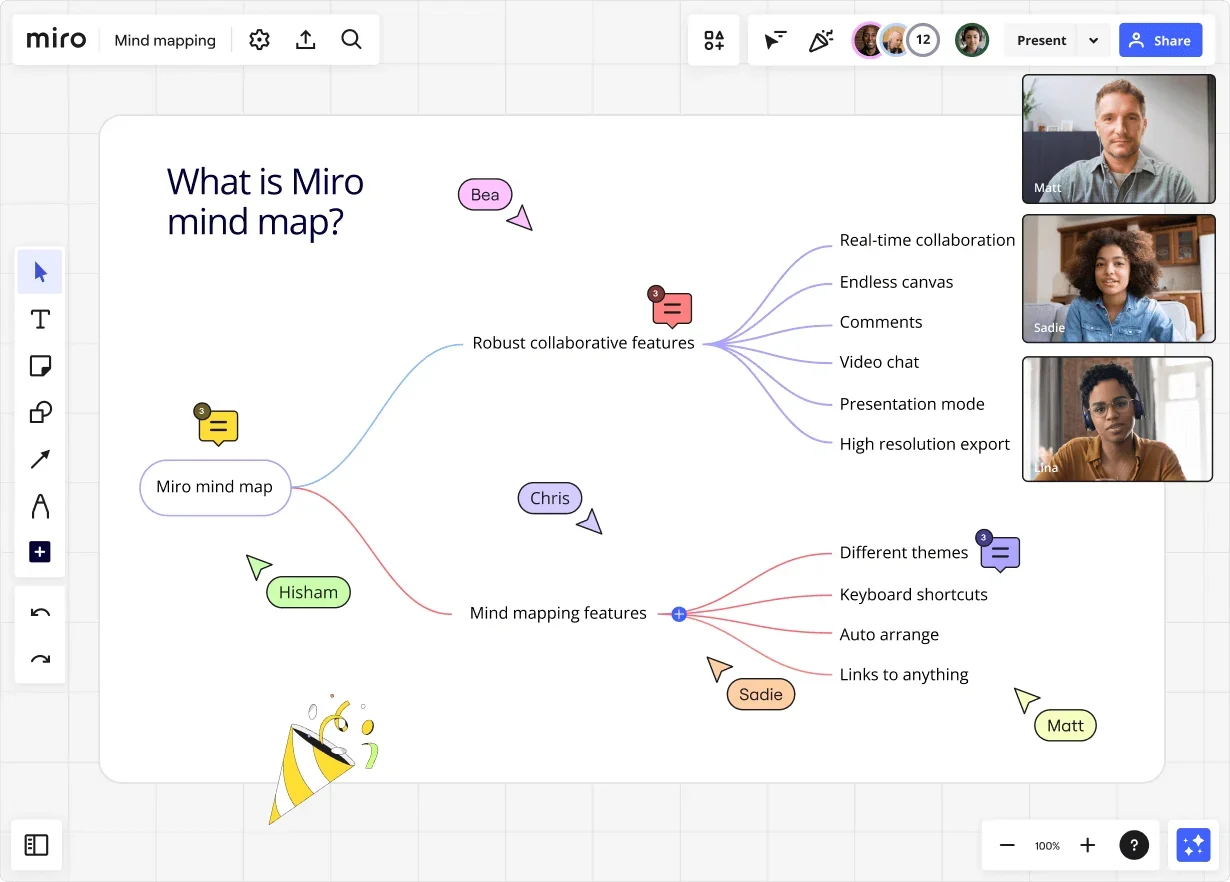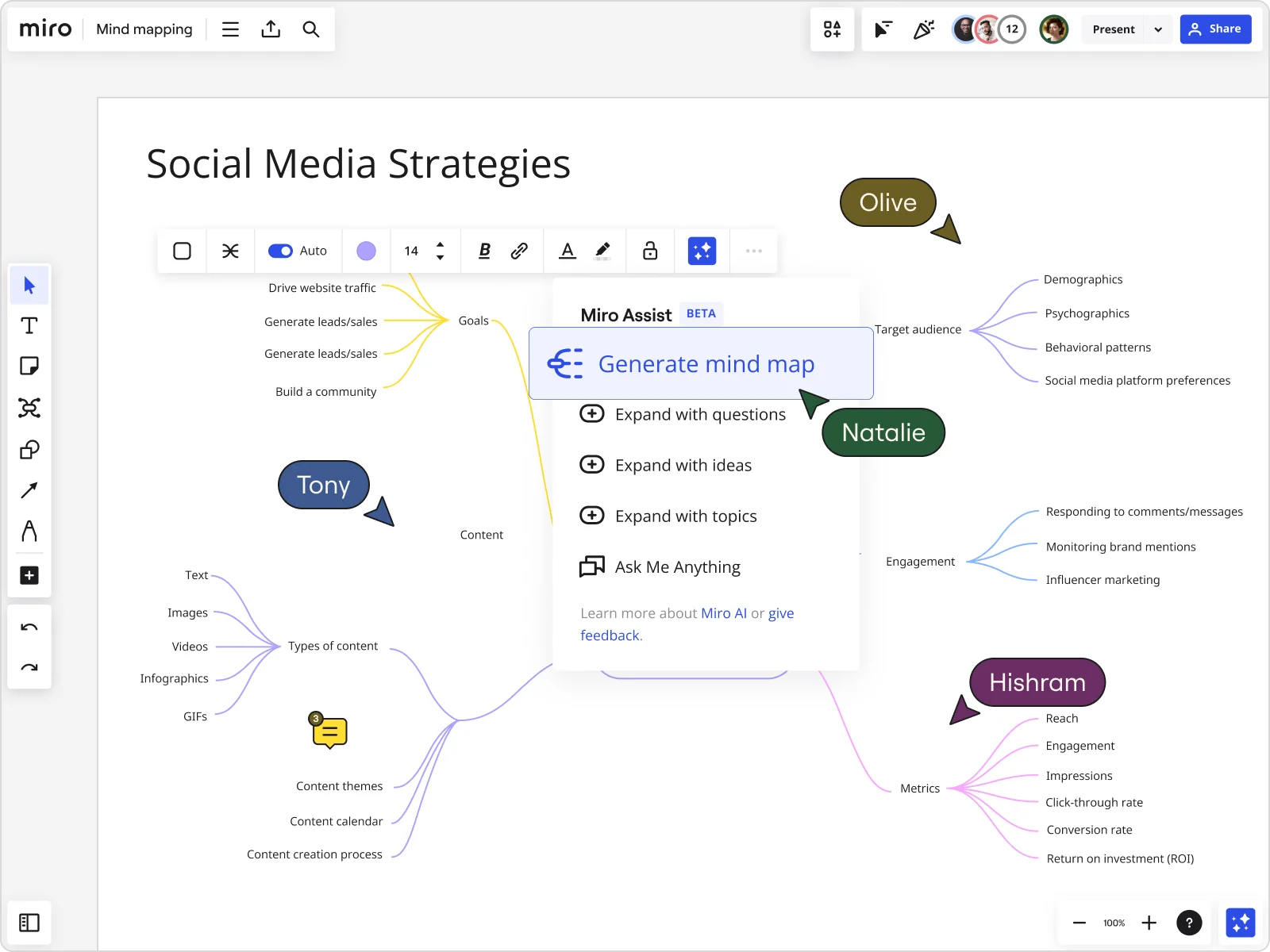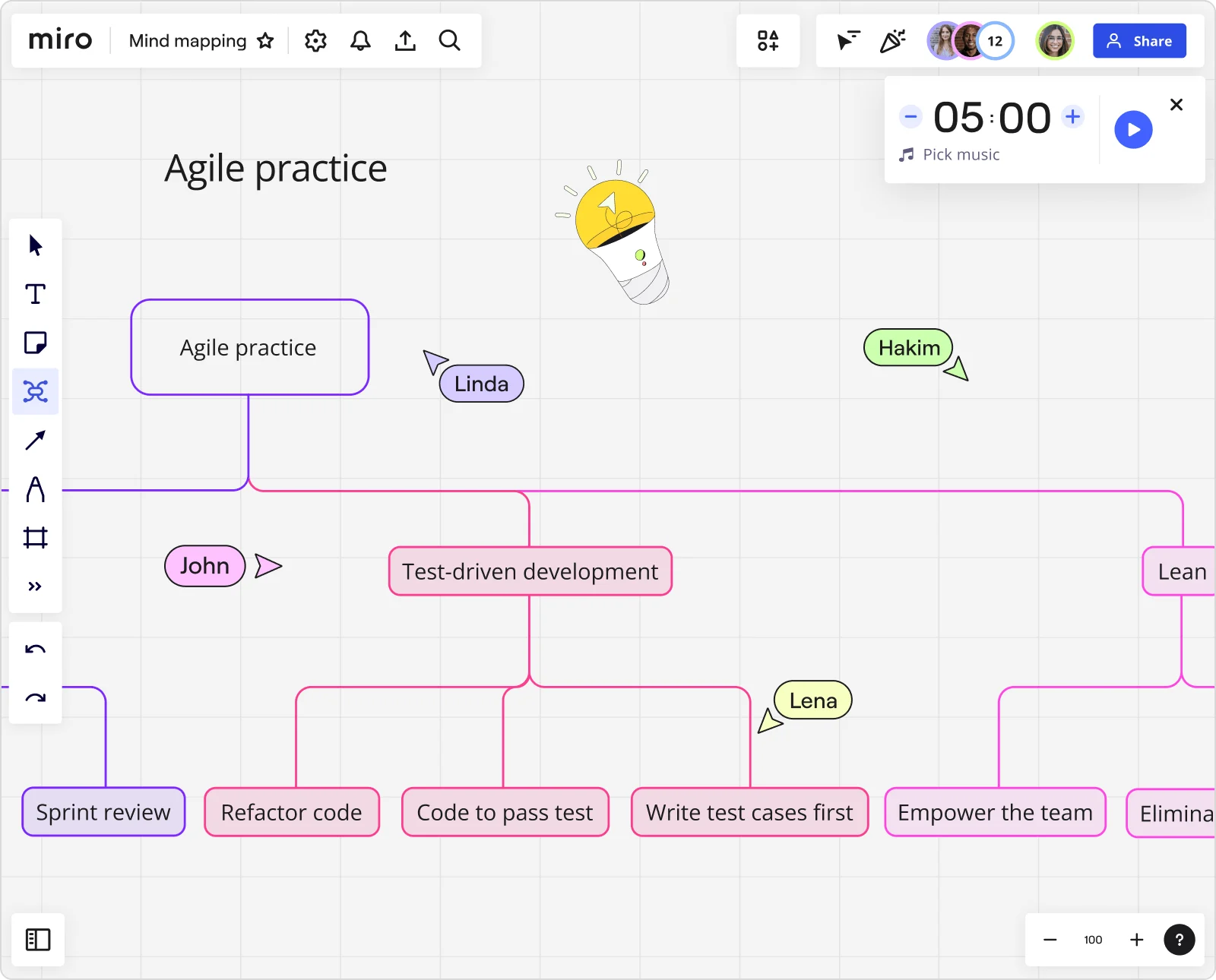
Mind map examples

Summary
In this guide, you will learn:
How Miro’s mind map examples organize complex ideas visually for brainstorming, planning, and collaboration.
Key components of a social media strategy mind map: goals, content, audience, engagement, and metrics.
Various free and editable Miro mind map templates for different use cases.
Step-by-step instructions and tips for creating and styling mind maps in Miro, including AI assistance.
Practical uses of mind maps for problem-solving, self-reflection, team-building, and learning complex topics.
How to incorporate images and visual references into mind maps for enhanced creativity.
Examples of mind mapping
Mind maps are useful tools for visualizing complex information in an organized and accessible way. They are powerful tools for brainstorming, planning, and communicating ideas across teams and stakeholders, and with Miro's mind map templates, you can quickly create structured diagrams to enhance collaboration and streamline workflows.. Take this example of a mind map created in Miro:

In this example, a team is brainstorming how to use social media to meet their marketing goals. At the center of the mind map is the main topic being discussed: "Social Media Strategies." Each branch represents different aspects of social media strategy planning.
Each brand of the mind map is used to detail different aspects of the strategy that need to be taken into consideration. For example, one branch highlights the goals of a social media strategy, such as increasing brand awareness, driving website traffic, generating leads/sales, and building a community.
Another branch delves into the types of content that could be used, like text, images, videos, infographics, and GIFs.
The target audience branch is divided into demographics, psychographics, behavioral patterns, and social media platform preferences, indicating a focus on understanding and segmenting the audience.
The branch dedicated to engagement outlines the importance of responding to comments/messages, monitoring brand mentions, and utilizing influencer marketing.
Finally, the metrics branch lists ways to measure success, including reach, engagement, impressions, click-through rate, conversion rate, and return on investment.
Mind map for an Agile team
Mind maps are not just useful for brainstorming ideas. They are also a great tool to structure information in a clear and digestible way. Here is another mind mapping example, this one showcasing how a concept can be communicated with a visual diagram.
In this example, a mind map is used to illustrate the processes and sub-processes of Agile software development. It demonstrates the step-by-step breakdown of methodologies, making complex development practices more understandable and actionable.

One branch is labeled Test-driven development, which further breaks down into steps like writing test cases first, coding to pass the test, and refactoring code. This branch suggests a focus on creating tests for specific functionality before even writing the code to implement that functionality, a core practice in Agile methodologies.
Another branch is dedicated to Lean, which is another Agile methodology emphasizing efficiency, specifically through the removal of waste and practices that empower the team.
Additional elements like Sprint review indicate periodic meetings to assess the progress of development sprints, another key component of Agile practices.
The mind map provides a clear structure for Agile practices that can be easily communicated among team members, ensuring everyone understands the workflow and their roles within it. It's a prime example of how mind mapping can be applied in project management and software development to streamline processes and enhance collaboration.
Author: Miro Team Last update: August 14, 2025